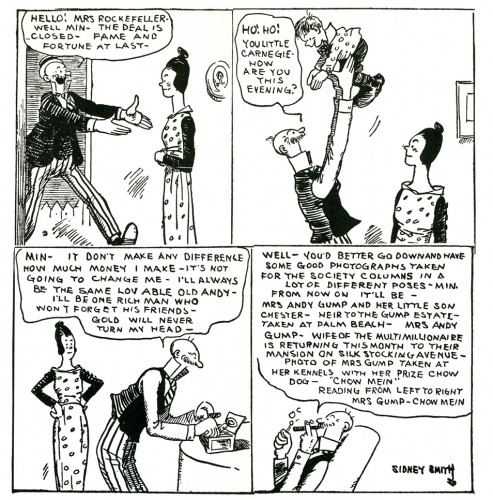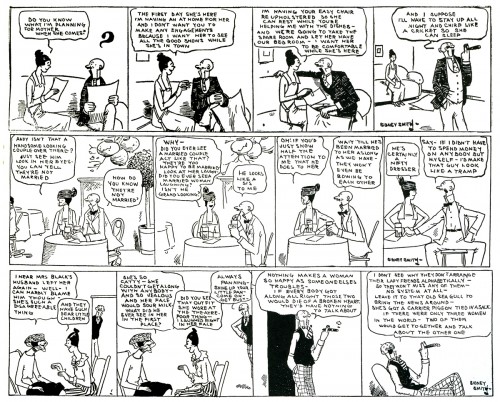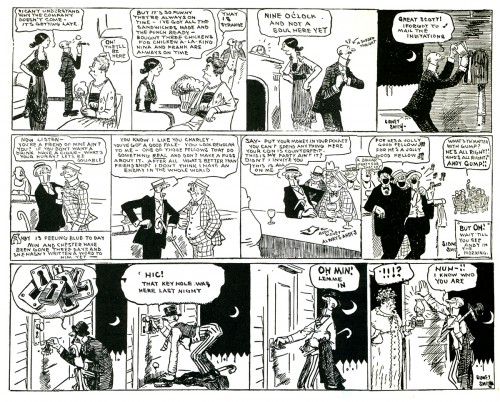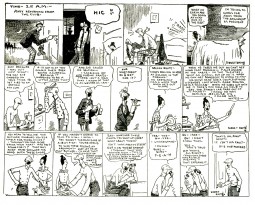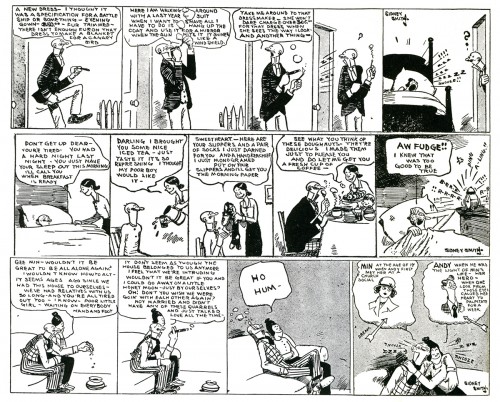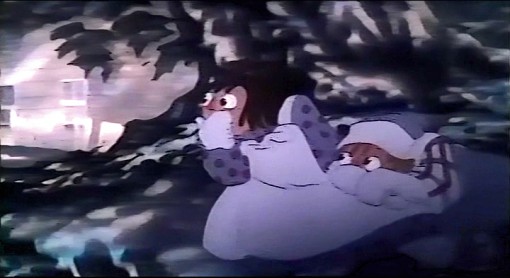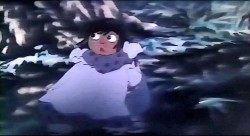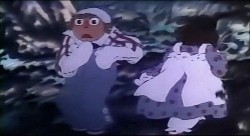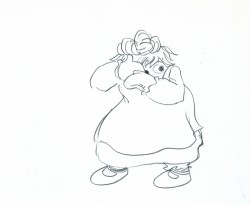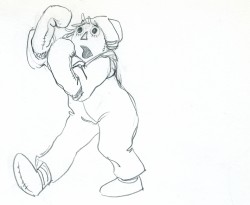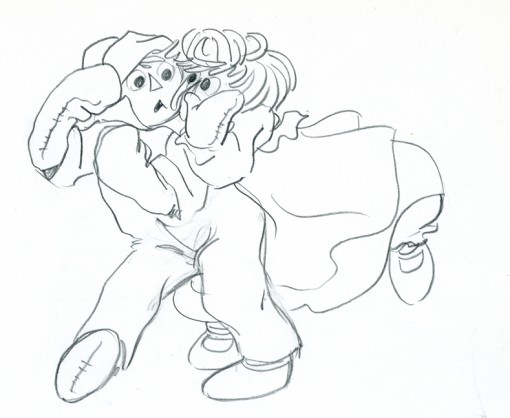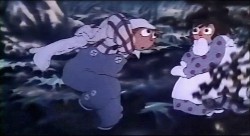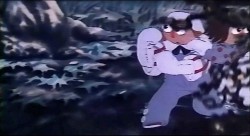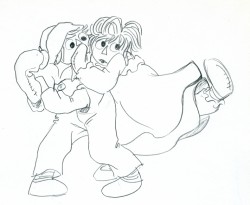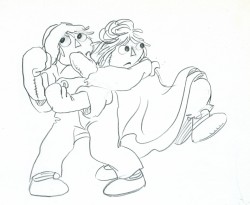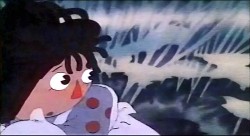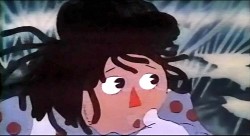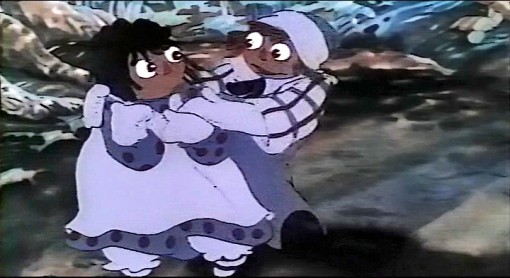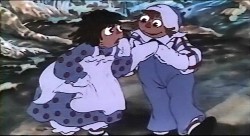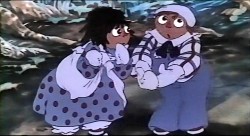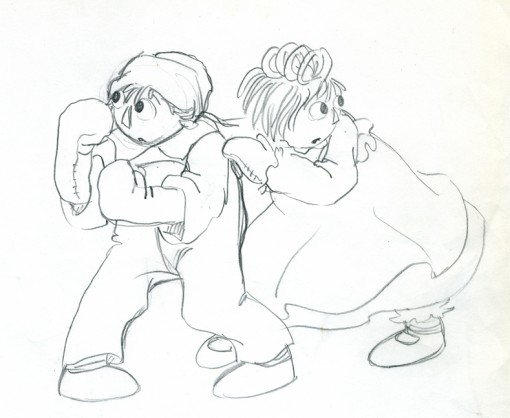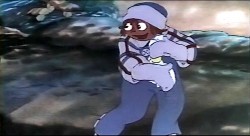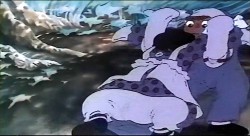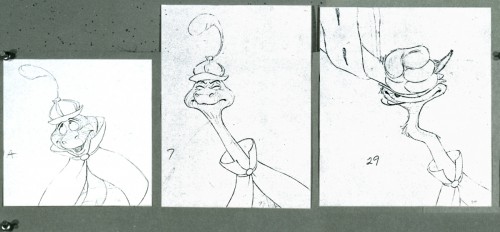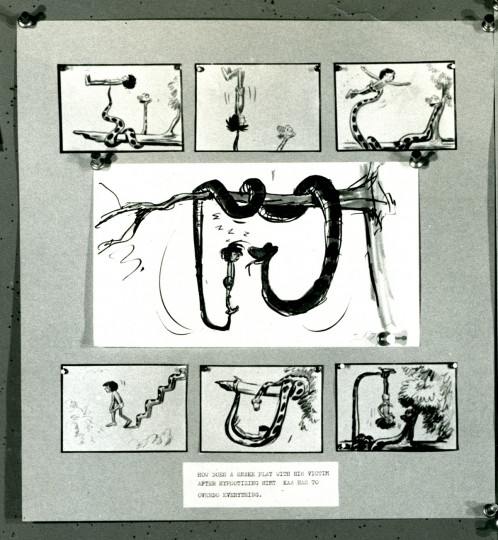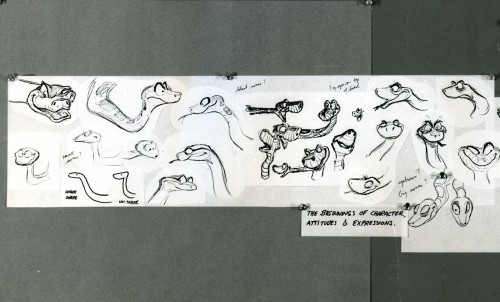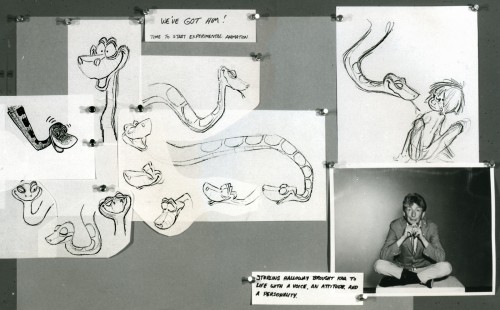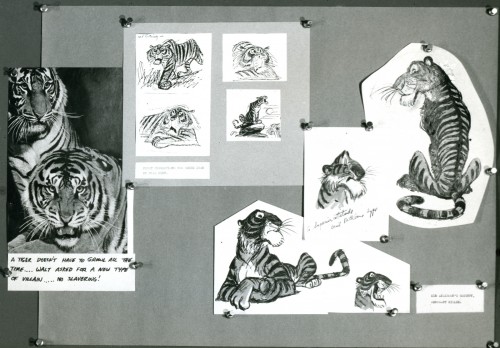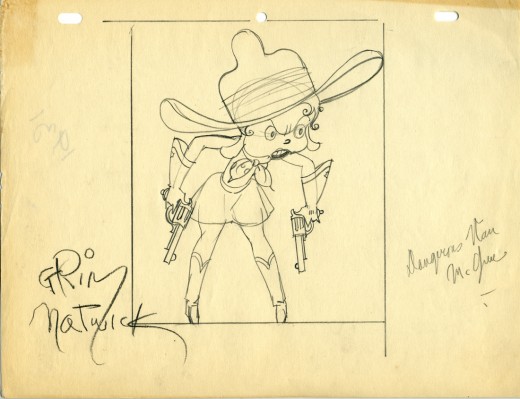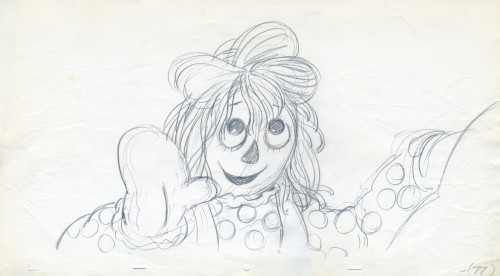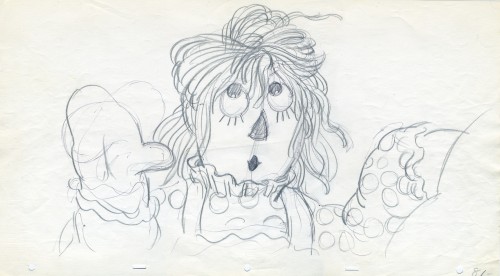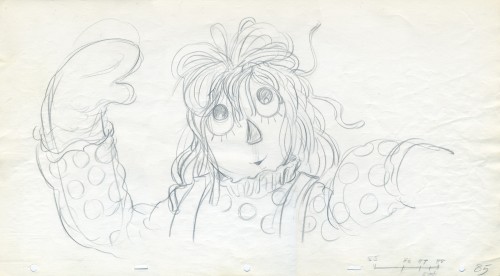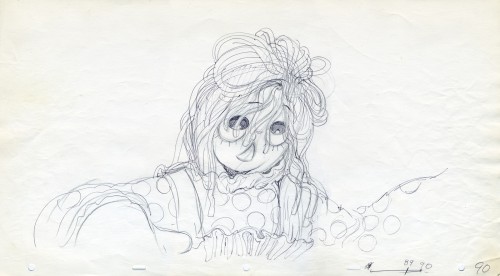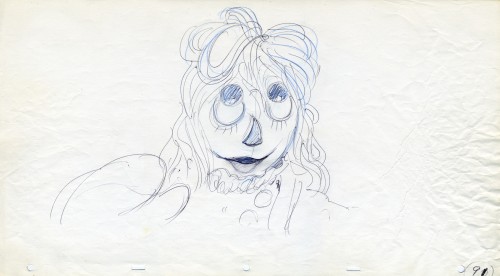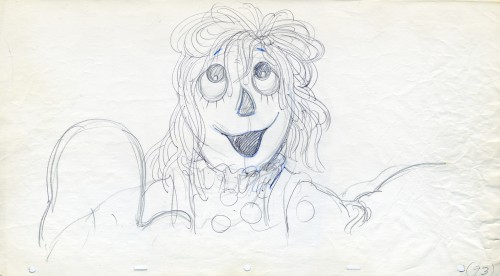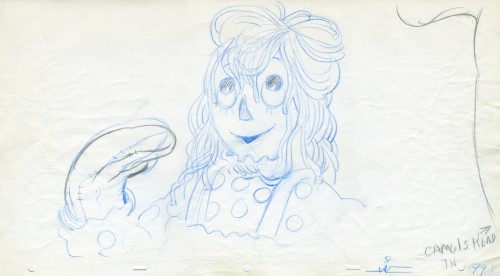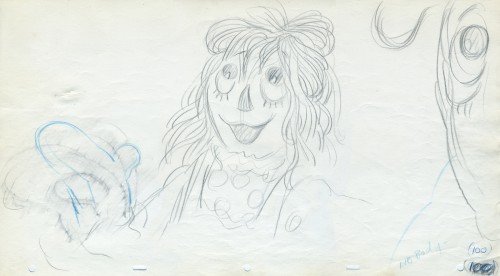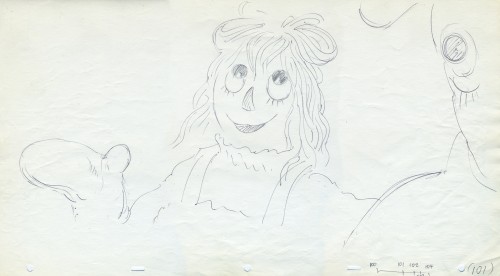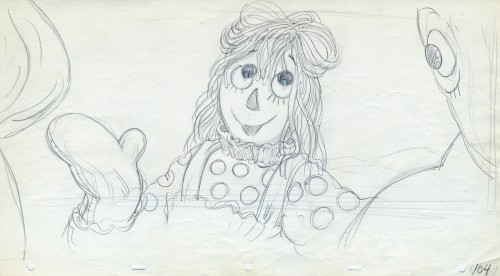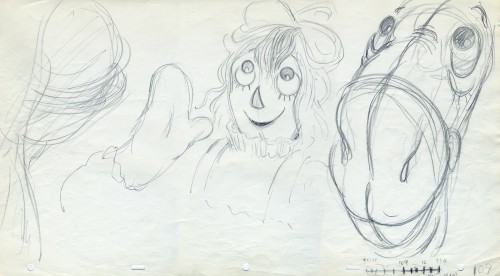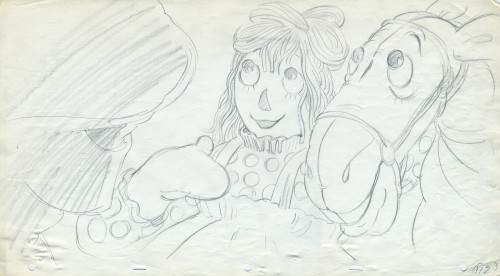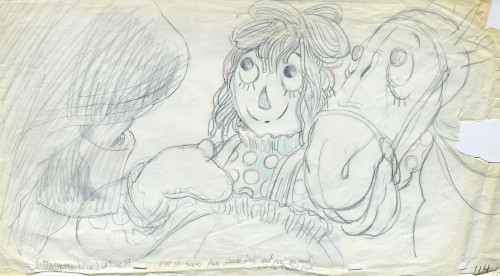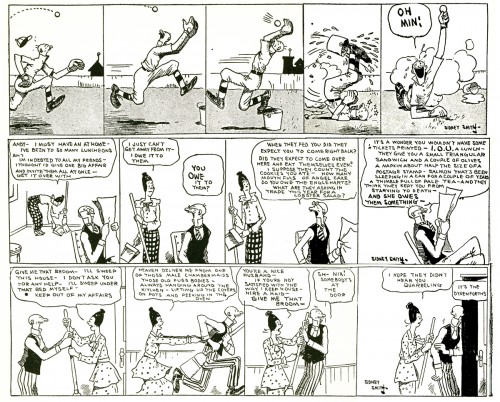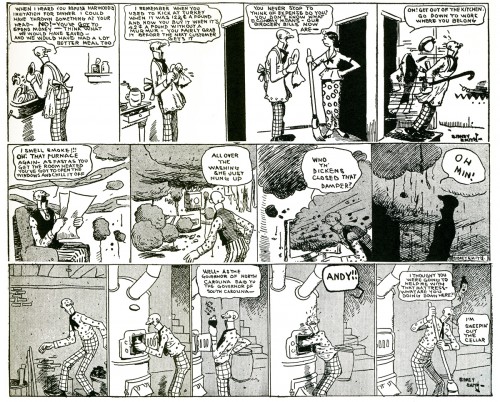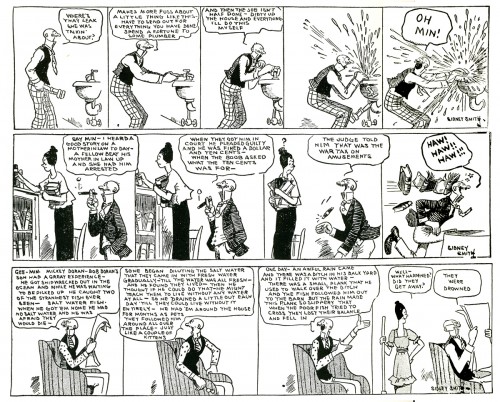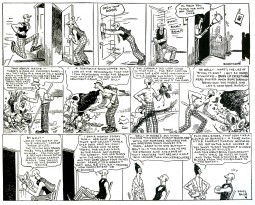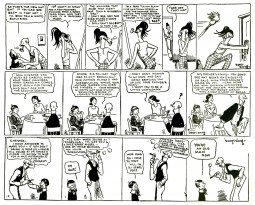Monthly ArchiveOctober 2007
Daily post 11 Oct 2007 07:57 am
Out There
 – This cartoon by Marjane Satrapi illustrates an article in this week’s Village Voice about the films at the New York Film Festival. Persepolis closes the Festival this coming Sunday.
– This cartoon by Marjane Satrapi illustrates an article in this week’s Village Voice about the films at the New York Film Festival. Persepolis closes the Festival this coming Sunday.
The Voice mention of Persepolis comes with this praise:
__You’d have to be blind not to
__see the excellence of Persepolis,
__an affecting, amusing, visually
__arresting adaptation of Marjane
__Satrapi’s graphic-novel memoir
__about growing up during the
__Iranian Revolution and coming of
__age amid the punk-rock
__intellectuals of Vienna.
The accompanying caption reads:
____________________________Closing-night jitters: Writers/directors Vincent Parannaud
____________________________and Marjane Satrapi will screen Persepolis on the last
____________________________night of the festival, October 14. Satrapi imagines it will
____________________________go something like this.
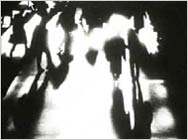 – There’s another great film by Jeff Scher posted on the NY Times Op Ed page. The Times now makes this available to everyone, and I encourage you to take a look. The pieces are not done in Flash (meaning it’s real animation) and are pure art.
– There’s another great film by Jeff Scher posted on the NY Times Op Ed page. The Times now makes this available to everyone, and I encourage you to take a look. The pieces are not done in Flash (meaning it’s real animation) and are pure art.
This piece is about Grend Central Station during the morning hour rush. Jeff has this to say about the animated piece on the NYTimes site:
__. . . I shot a two-minute roll of film before rushing off
__to catch my train. Most of the film was shot with a 75-year-old 16 mm Bell and Howell
__Filmo, which was one of the first home movie cameras ever mass-marketed. There is a
__lot of this beautiful old camera’s personality in this film. I used black-and-white because
__Grand Central is always black-and-white in my mind. This particular film has a very low
__sensitivity to light (A.S.A. 6) and is very contrast-y. The only way to make an exposure
__was to literally shoot the pools of window light. As people move through the light, it’s
__almost as if they are sculpting it with their passing silhouettes.
A Weegee for a new century. It’s a good call for the NY Times to post these pieces every month, and I have to believe that the more hits it receives the more the NY Times will be encouraged to run more of them. Stop reading this now and Go.
 – A couple of sites have devoted some attention to the actual residences of some of the Golden Age animators and artists.
– A couple of sites have devoted some attention to the actual residences of some of the Golden Age animators and artists.
Joe Campana‘s Animation – Who & Where, an excellent site, seems to have started it with this post on some Santa Barbara artists, Paul Julian and Erni Nordli . Now there’s this post on Fred Moore and Tex Avery‘s residence.
By the way, this is a GREAT site. Browse around if you’re unfamiliar with it.
Hans Perk on his site, A Film LA, has a more general post about the artists working at the 1933 Hyerion Studio. Maps give us a good guide to how far a travel these guys had to their homes. It all seems so close, until you think about the kind of roads they had to travel, the kinds of autos they drove and the traffic in general.
I can’t imagine doing the research these guys are offering us, but I love. I love it.
By the way, Hans Perk has today posted video clips on this site of Roy Disney presenting and Floyd Norman accepting his Disney Legend award. Congratulations to Floyd, I’m truly happy for him. A well deserved recognition of his achievement for some of the great work he’s done in animation.
Comic Art 10 Oct 2007 08:19 am
The Gumps II
- The Gumps debuted in a peculiar way. Old Doc Yak was the comic strip that Sidney Smith drew at the Chicago Tribune. Joseph Patterson, an editor at the paper, came up with the idea of The Gumps and asked Smith to move onto it. Old Doc Yak, a talking animal strip, had run its course and Smith agreed to move onto a strip about ordinary people in their lives.
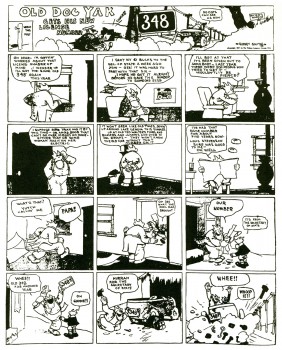 In the last strip, Old Doc Yak and his family were evicted from their house by the landlord. The last panel of the last strip showed that empty house standing there. The next day’s strip showed the Gump family moving in and taking over the strip occupied by the Yak family.
In the last strip, Old Doc Yak and his family were evicted from their house by the landlord. The last panel of the last strip showed that empty house standing there. The next day’s strip showed the Gump family moving in and taking over the strip occupied by the Yak family.
Comic strips were more of an art form back then. First off, they were large enough to be able to read them. They also had a large enough popularity that they were able to grab a regular and large readership. This allowed them to be daring enough to try to grab a larger audience through whatever means necessary.
The Gumps was clever in many ways and provided the goods with an exceptional story line that had a very large audience.
(Click any image to enlarge.)
Here’s part 2 of the Early Years of The Gumps.
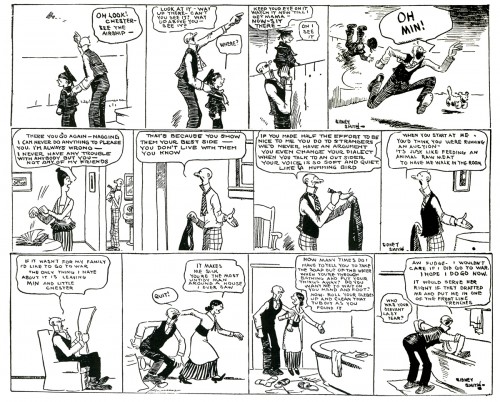
Animation &Animation Artifacts &Richard Williams &Tissa David 09 Oct 2007 08:09 am
Raggedy Tissa
- Tissa David did some of her most elaborate and fluid animation in Raggedy Ann and Andy. Her first scene to animate (after the pilot) was the introduction to her song number. This scene was a whopping long one and was particularly elaborate. It was also the first whole scene put into production.
The cameraman Al Rezek constructed a makeshift multiplane setup for it. This was a bit difficult to do in Panavision, but he did it. There had to be an ominous shadow of a bush overlapping the pair of dolls as they entered the deep dark woods. The scene must have been shot a dozen or more times until we were happy with it.
I have all the drawings to this scene, rough and clean up. There are a lot of them. I’ll post a couple of Tissa’s roughs here to give you an idea of the scene. Dick Williams cleaned it up, himself, and it took him a while. In a future posting, when I have more energy I’ll post more of the roughs against Dick’s clean ups.
I’m also posting some frame grabs from a bad pirated dvd version I have of the film.
Animation &Animation Artifacts &Disney &Models 08 Oct 2007 07:46 am
Jungle Book Stats
- With the release of The Jungle Book dvd, I thought I’d post something for it.
To me this film represents the first in the big decline of Disney Animation. The reliance on star voices started here, and the result was not good. They got good voices, but they relied on the voices for the animated character, and too few characters had original animated styling to overcome the actors that did them.
The singers killed it. By that I mean, the character of Baloo became more Phil Harris and less Baloo the bear. Louie Prima‘s King Louie was more Louis Prima than anything you’d find in the African setting. George Sanders was more of an actor than a personality, and he offered Shere Khan a character that Milt Kahl was able to build on. Sterling Holloway as Kaa was also more an actor than a personality, and he played what was asked of him. Ollie Johston was able to develop on it.

(click any image you’d like to enlarge.)
Animated features try to continue in the same vein. Voices like Robin Williams or David Spade or Eva Gabor are not going to make the animated character better. It’d be more interesting to have unknown voices that are well cast. Peter Pan, Snow White, Bambi and Cinderella. Lady & The Tramp, Alice, Pinocchio are all brilliantly cast features.
The Jungle Book, to me, gets incredibly dull. I’ve sat through projections of it at least a dozen times, and each and every time was exhausting. Lots of set pieces, but I don’t think it really adds up to a whole. Except for the Shere Khan scenes, there’s virtually no conflict and even less tension. Sorry to say anything bad, but it’s hard for me not to.
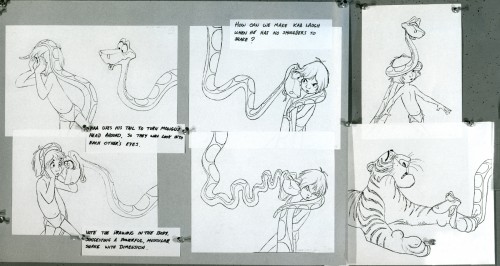
The material I have here came from stats that were prepared to make Thomas & Johnston’s The Illusion of Life. The little attachments became the captions for that book where the images were printed small.
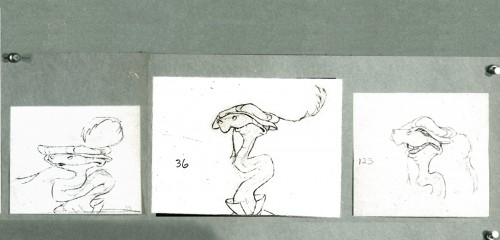
These images are pretty light, so I had to soup them up a bit so that you can read the lines.
Daily post &SpornFilms 07 Oct 2007 08:04 am
MOMA’s calling
– My big Museum of Modern Art retrospective is rapidly approaching, and plans are getting 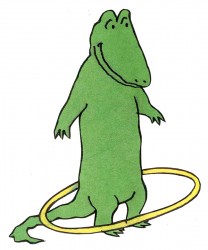 tighter and tighter. We have a program for the shows and I thought this might be a good time to let you know what it is (especially since MOMA has just posted it on their calandar this weekend.)
tighter and tighter. We have a program for the shows and I thought this might be a good time to let you know what it is (especially since MOMA has just posted it on their calandar this weekend.)
There are three film programs starting on Friday, November 9th at 6:30PM. It continues all day Saturday at 1:30, 3:30 and 5:30. One of the Saturday shows is a repeat of Friday’s. The rest of the films repeat on Sunday at 2:45 and 4:45.
On Monday, November 12th at 7PM the programs conclude with a live chat between John Canemaker, Josh Siegel (of MOMA) and me. This program will include film clips new and old – including two new shorts we’ve just completed as well as a sample of the animatic we’ve done for our feature, POE.
Here’s the complete breakdown of the shows appearing in MOMA’s catalogue:
Friday, November 9, 6:30; Repeated Saturday, November 10, 1:30. T2
Michael Sporn Program 1: New York Stories
- Mona Mon Amour. 2001. Humorist Patti Stren looks for love in all the wrong places in this comical monologue of modern-day neuroses. 9 min.
Champagne. 1996. A moving animated documentary portrait of Champagne Saltes, a bright and sassy fourteen-year-old who lived in a convent school while her drug-addicted mother was in prison for murder. 13 min.
The Man Who Walked Between the Towers. 2005. On an iconic moment in New York history, the day in 1974 when French aerialist Philippe Petit made his death-defying tightrope walk across the towers of the not-yet-finished World Trade Center. Based on
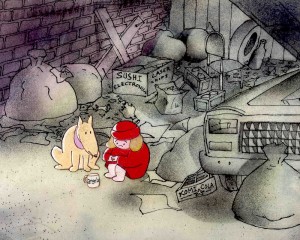 Mordicai Gerstein’s Caldecott Award-winning book and narrated by Jake Gyllenhaal. 10 min.
Mordicai Gerstein’s Caldecott Award-winning book and narrated by Jake Gyllenhaal. 10 min.Lyle, Lyle Crocodile. 1987. The comic misadventures of Bernard Waber’s beloved neighborhood reptile (in the classic children’s book The House on East 88th Street) are narrated by Tony Randall with songs by Charles Strouse (Annie). 26 min.
The Little Match Girl. 1991. Abandoned to the wintry streets of New York, a little girl inspires compassion for the homeless in this lovely rendition of the Hans Christian Andersen tale. Narrated by F. Murray Abraham. 26 min. Program 84 min.
Saturday, November 10, 3:30; Repeated Sunday, November 11, 2:45. T2
Michael Sporn Program 2: Fables
- Doctor DeSoto. 1984. An Oscar-nominated adaptation of William Steig’s classic story about a clever mouse-dentist who outwits a conniving fox. 10 min.
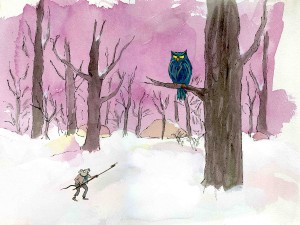 Abel’s Island. 1988. A sudden gale storm whisks William Steig’s Edwardian mouse, Abelard Hassam di Chirico Flint, away from his wife and home, depositing him on a primitive, deserted island. With the voices of Tim Curry and others. 26 min.
Abel’s Island. 1988. A sudden gale storm whisks William Steig’s Edwardian mouse, Abelard Hassam di Chirico Flint, away from his wife and home, depositing him on a primitive, deserted island. With the voices of Tim Curry and others. 26 min.The Red Shoes. 1990. Using a vibrant palette, Sporn transposes Hans Christian Andersen’s touching tale to contemporary Harlem. Narrated by Ossie Davis. 26 min.
The Hunting of the Snark. 1989. Lewis Carroll’s wondrously nonsensical poem, narrated by James Earl Jones, is brought to life through a range of visual conceits and animation techniques. 19 min. Program 81 min.
Saturday, November 10, 5:30; Repeated Sunday, November 11, 4:45. T2
Michael Sporn Program 3: A Peaceable Kingdom
- Goodnight Moon. 1999. Margaret Wise Brown’s sixty-year-old book, with illustrations by Clement Hurd, has pride of place in every American child’s bedroom, and is joyously brought to the screen in this award-winning adaptation. Narrated by Susan Sarandon. 4 min.
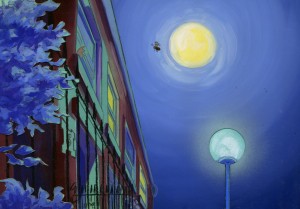 The Marzipan Pig. 1990. Based on Russell Hoban’s deeply touching fable of unrequited love involving a marzipan pig, a bee, a taxi meter, a flower, a mouse, and a clock. Narrated by Tim Curry. 26 min.
The Marzipan Pig. 1990. Based on Russell Hoban’s deeply touching fable of unrequited love involving a marzipan pig, a bee, a taxi meter, a flower, a mouse, and a clock. Narrated by Tim Curry. 26 min.The Amazing Bone. 1985. Dark adventures await Pearl, William Steig’s sweet-natured piglet, when she discovers a magical talking bone that has fallen out of a witch’s basket. 12 min.
Ira Sleeps Over. 1992. A delightful adaptation of Bernard Waber’s story about a momentous sleepover, with songs by Tony Award-winning composer William Finn. 26 min.
The Story of the Dancing Frog. 1989. A sophisticated British widow becomes the stage manager to a debonair frog, who dazzles crowds the world over with his cakewalk, polka and tap dance routines. Based on the book by Quentin Blake, narrated by Amanda Plummer. 26 min. Program 94 min.
Monday, November 12, 7:00. T2
An Evening with Michael Sporn.
- The artist in conversation with animation historian/filmmaker John Canemaker and MoMA assistant curator Joshua Siegel, illustrated with clips from his award-winning animated films, including a new short, Pab’s First Burger, and an excerpt from his feature-length work-in-progress about the life and work of Edgar Allan Poe. Sporn’s career is also traced through his commercials, public service announcements, title sequences, and visuals for the Broadway stage. Program 90 min.
Animation &Animation Artifacts &Fleischer 06 Oct 2007 08:03 am
Grim’s Betty – Dangerous Nan
- The Bum Bandit was a FLeischer cartoon starring Bimbo produced in 1931. It marks the fourth appearance of Betty Boop – who doesn’t get billing in the credits. As a matter of fact, she introduces herself with a different name during her song in the film, “I’m Dangerous Nan, the sister of Dan McGrew.” She’s so tough she spits bullets through a cactus.
Grim Natwick did the drawing, posted here. It’s dated 1931, the year of the film. The drawn Betty looks better than the film’s Betty. A lot was lost in the inking – including her scarf and guns. (I wonder if it was cleaned up for our delicate times?)
I like seeing the peg holes which are certainly more sophisticated than the two round holes used in other studios at the time.
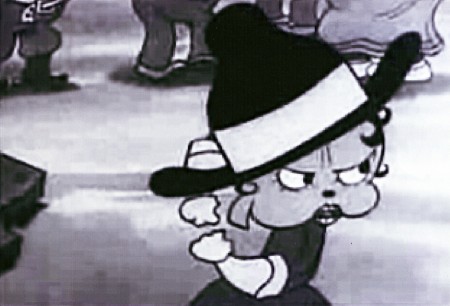
You can watch this film in an OK version on YouTube
(for however long they allow it to continue there.)
Animation &Animation Artifacts &Richard Williams 05 Oct 2007 09:32 am
Raggedy Celebration
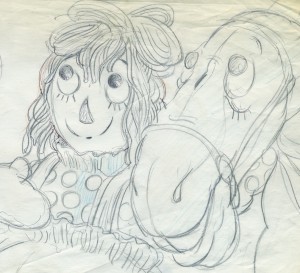 - As I mentioned a few weeks back, ASIFA/Hollywood is planning a reunion of the crew of Raggedy Ann to celebrate the 30th Anniversary of that film’s production. This ASIFA event will be at the American Film Institute in Hollywood on November 17th. It’s hoped that a simultaneous reunion can happen in New York City, but I still wonder about that coming together.
- As I mentioned a few weeks back, ASIFA/Hollywood is planning a reunion of the crew of Raggedy Ann to celebrate the 30th Anniversary of that film’s production. This ASIFA event will be at the American Film Institute in Hollywood on November 17th. It’s hoped that a simultaneous reunion can happen in New York City, but I still wonder about that coming together.
Regardless, this is good reason to post art from the film and keep posting it until the event.
Sooooooo . . .
Here are some animation drawings/ roughs by Corny Cole. His artwork is close to Johnny Gruelle’s originals. He, of course, was the film’s origninal designer, though I’m not sure how his designs related to the final screen picture.
Corny did every drawing (partial inbetweens) though I’m only posting extremes. All this art was done on paper 19″ x 10.5″ for Panavision proportions. (And this was the small paper we used.) Of course, there’s an animated zoom in the scene. It wouldn’t be a Corny Cole scene without it. Here are Corny’s extremes:
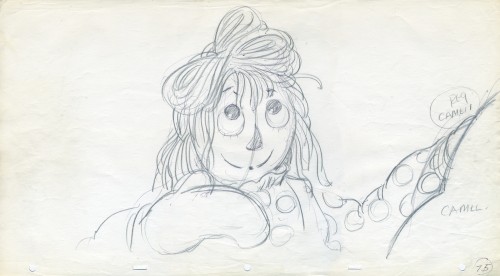 75
75
(Click any image to enlarge.)
Articles on Animation &Norshtein 04 Oct 2007 07:53 am
Norstein
- I started the day watching an interview with Yurij Norstein. It was a very inspirational 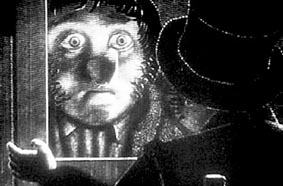 viewing for me. (As a matter of fact, this site, Animatsaya In English, is a must read for anyone interested in Russian animation – and you should be. There’s just so much to read/view on it.) But back to the interview.
viewing for me. (As a matter of fact, this site, Animatsaya In English, is a must read for anyone interested in Russian animation – and you should be. There’s just so much to read/view on it.) But back to the interview.
Norstein had just acted as a judge on the 12th Open Russian Festival of Animated Film back in March of 2007. (I assume this interview has been out there for some time.)
Some few parts of the interview really caught my attention. Here he’s asked about current films in production and their quality:
- Norstein: The very essence of animation that had been laid down in the 1950s is missing from today’s feature film. So, we cannot see too many films today of true quality.
Q: What is the essence of animation which is gone? Is it possible to formulate in words that which has gone?
N: Empathy is gone, sincerity is gone… hardship is gone. For me this is very important. Psychology is gone. The school of gesture is gone; classic gesture. In their place is discreteness, which is very quickly and easily understood, and just as quickly and easily forgotten.
That’s the essence of the problem. Isn’t it?
Then he’s asked to comment on Petrov‘s most recent film, My Love, and I think he offers an excellent answer.
- Q: … let’s begin with Petrov’s film ["My Love"]. Unfortunately the name “Petrov”, I think, the rest of the world probably knows better than we do?
N: No, he’s also known over here, of course.
… he received an Oscar for the film “The Old Man and the Sea”. Which incidentally was made in Canada, not here.
Q: There’s an unusual technique, as I understand.
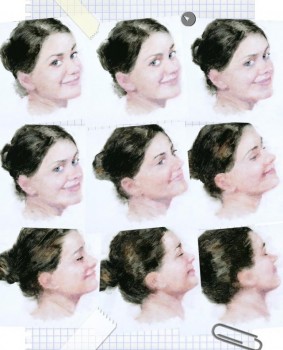 N: The technique is something. He has an unusual technique – I can’t say that he invented it, animating with paint on glass, I think it was invented by Caroline Leaf. She made the first film, in 1978. It was called “The Street” [watch the film], and it was a wonderful film in its time. Some story by a Jewish writer [Mordecai Richler], I don’t remember now, I don’t know… this was an event then. Sasha was certainly aware of this film. He wonderfully… I think that in animated filmmaking today few draw like him, and maybe nobody does. He’s a complete virtuoso in this respect. And his first film “The Cow” [see my earlier post about Petrov] was an immediate phenomenon. It was a diploma work and a full-fledged film at the same time, and incidentally was nominated for an Oscar. What’s surprising is that __________Petrov model sheet for My Love.
N: The technique is something. He has an unusual technique – I can’t say that he invented it, animating with paint on glass, I think it was invented by Caroline Leaf. She made the first film, in 1978. It was called “The Street” [watch the film], and it was a wonderful film in its time. Some story by a Jewish writer [Mordecai Richler], I don’t remember now, I don’t know… this was an event then. Sasha was certainly aware of this film. He wonderfully… I think that in animated filmmaking today few draw like him, and maybe nobody does. He’s a complete virtuoso in this respect. And his first film “The Cow” [see my earlier post about Petrov] was an immediate phenomenon. It was a diploma work and a full-fledged film at the same time, and incidentally was nominated for an Oscar. What’s surprising is that __________Petrov model sheet for My Love.
it DIDN’T win. Now that was one film which
should have won, because it was in all respects a NEW film. Of a new psychology. Well, it’s sufficient to say that it was an adaptation of Platonov, you see? This already speaks of the quality of the animation. The film which he has just made – it received the Grand Prix, and I think won another two categories… but… I should really speak with Sasha about it, because the virtuosity is the same. The same glamour. But I think there are things in cinema more important than certain moments, than a simple showcase of mastery…
Q: So basically… you wished for depth?
N: I wished for depth. I wished for… economy. I wished for, on some occasions, humility, when virtuosity gives way to something more deep, psychologically more important.
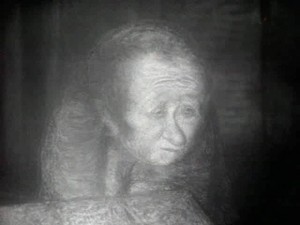 The interview also talks extensively about Norstein’s film in progress, The Overcoat.
The interview also talks extensively about Norstein’s film in progress, The Overcoat.
Apparently, this film is in full production again and a half hour should be completed this year. (The total running time will be about 65 mins.) He expects to release that 30 mins. when they’re complete.
To watch or read the full interview go here.
_
_________Norstein’s The Overcoat
Animation Artifacts &Articles on Animation &Puppet Animation 03 Oct 2007 07:31 am
Starévitch
- I’m continuing a small series of lifts from a catalogue I have which features master French animation pioneers. It was a souvenir of a 1981 Parisian exhibition on the history of French animation.
My focus here is one of the greatest stop motion animators in history, Ladislas Starévitch. I’m offering, here, a loose translation of the catalogue entry (with a couple of additions I’ve chosen to add.)
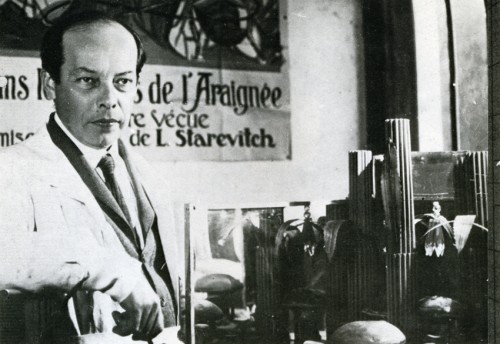
Ladislas Starévitch (1882-1965)
- Born to a Polish family living in Moscow a century ago, Starévitch was an entomologist. When the idea occurred to him to use the technique of frame by frame animation to reconstruct aninsect battle which he’d witnessed, animation entered his life. The film was titled Lucanus Cervus (1910).
So attracted to this conceit of animating his bugs, in the next few years, he made several other stop-motion films before actually beginning a full-time career in animation. This included one of his most famous films, The Revenge of a Kinematograph Cameraman in 1912. The Russian Revolution led to his emigration to France in 1919; this put a temporary halt to his filmmaking. However, a new career began in France when he started to make fiction films exclusively. Assisted by his daughter, Irene, he grew dedicated to 3D puppet filmmaking for the rest of his life.
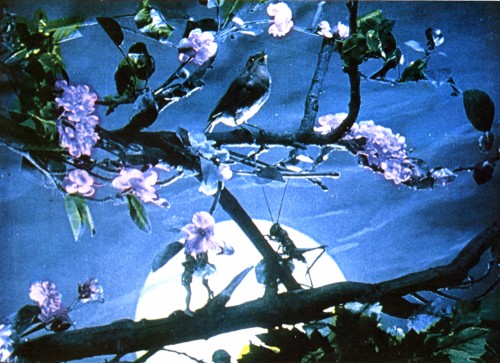
The Voice of the Nightingale (1923)
Poet and craftsman, as inventive as he was clever, Starévitch created new films including In the Spider’s Grip (1920), The Voice of the Nightingale (1923), and The Eyes of the Dragon (1925), etc. Many technical innovations came from his fertile imagination and resulted in a high level of animation.
Starévitch completed a full-length film (65 mins) entitled The Story of Fox (1930) which found distribution years later (1941) after adding sound to the feature. He lzo created a series with the dog “Fétiche” (1934) as his principal protagonist.
_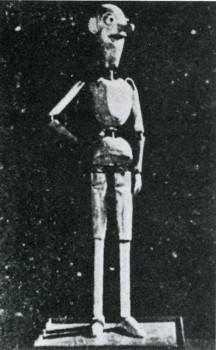 __
__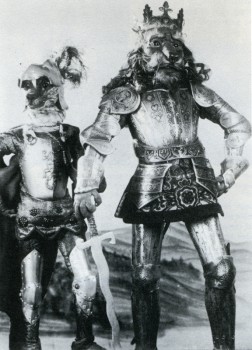
_To the left, an early Starévitch armature from the MOMA collection.
_To the right, a scene from The Story of Fox.
When I was young I had a 16mm print of The Revenge of the Kinematographic Cameraman, and I think I must have watched that print a couple of hundred times. I was absolutely intrigued with the accomplishment he had done in 1912 and felt, then, that it was on the same level as Winsor McCay’s Gertie the Dinosaur.
I’ve seen a number of his films at the Museum of Modern Art and was completely taken with his technique and craft in the film, The Magical Clock (1928) (aka The Little Girl Who Wanted to Be a Princess). The film includes some amazing combinations of Live Action with stop motion animation.
It’d be lovely if some of these films were collected for dvd release in a good quality version. Because many of these films are in public domain, there are a lot of bad, unwatchable copies out there. The official website for Starévitch includes links to some copies of films from Doriane Films including The World of Magic of Starevitch and The Story of Fox. Presumably these might be the best available.
Comic Art 02 Oct 2007 07:14 am
The Gumps I
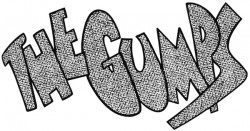 - The Gumps was the first comic strip to tell a running story. Like a serial the strip continued on a daily basis from 1917 through 1957. The story was particularly compelling; readers grew addicted to it, like a soap opera. In 1923, the Board of Trade in Minneapolis suspended operations so that the brokers could get the afternoon paper to find out whether the Gumps’ billionaire Uncle Bim had been trapped in marriage. When Mary Gold died in 1929, it was the first time a cartoon character died in a strip, and the Chicago Tribune was swamped with mail and phone calls with people threatening to cancel their subscriptions to the paper if she wasn’t brought back.
- The Gumps was the first comic strip to tell a running story. Like a serial the strip continued on a daily basis from 1917 through 1957. The story was particularly compelling; readers grew addicted to it, like a soap opera. In 1923, the Board of Trade in Minneapolis suspended operations so that the brokers could get the afternoon paper to find out whether the Gumps’ billionaire Uncle Bim had been trapped in marriage. When Mary Gold died in 1929, it was the first time a cartoon character died in a strip, and the Chicago Tribune was swamped with mail and phone calls with people threatening to cancel their subscriptions to the paper if she wasn’t brought back.
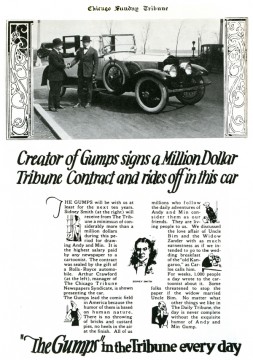 An Editor of the Chicago Tribune, Joseph Patterson, came up with the idea of having a strip that reflected the stories of “real” people. He didn’t want a daily gag with this strip and hired Sidney Smith to develop such a strip. Patterson came up with the title, “The Gumps” and brought some story ideas to Smith to develop.
An Editor of the Chicago Tribune, Joseph Patterson, came up with the idea of having a strip that reflected the stories of “real” people. He didn’t want a daily gag with this strip and hired Sidney Smith to develop such a strip. Patterson came up with the title, “The Gumps” and brought some story ideas to Smith to develop.
It was the first strip to make its creator, Sidney Smith, a millionaire. It was that popular, and they promoted the contract. He drew the strip until his death in 1935. Smith had just signed a new three year contract and went out to celebrate. He died in a car crash.
The strip went on to a couple of assistants who worked with Smith, Stanley Link and Blair Walliser. However, for reasons hard to understand now, it was Gus Edson, a staff artist for the New York News, who continued the strip into the 50′s. (Edson was later one of the creators of the strip, Dondi, also created with an appealing, continuous story.)
The story being everything, I thought I’d introduce the strip here with a number of panels to give you a taste, and then I’ll follow through once a week with more chunks of the story for those interested. Believe me it’s a compelling story, well told, and even the drawing style becomes pleasant as you get into it. So here are the first strips.
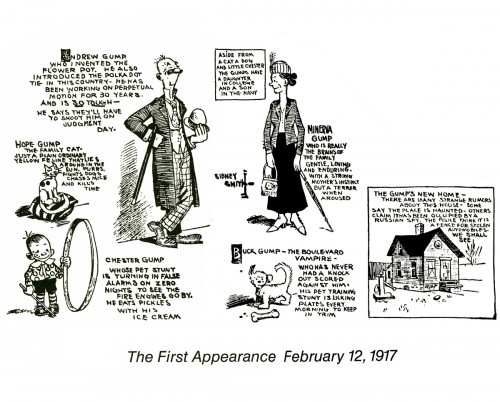
{Click any image to enlarge to be able to read it.)
